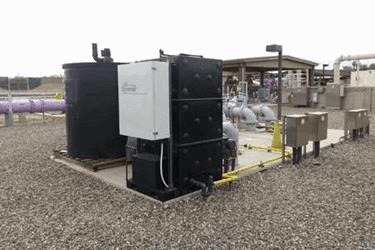Reducing Odor Control Operational Expenses And Headaches

Odor control related to wastewater systems and processing can be a tricky thing. Additionally, everything we do to control odor costs money, with some options costing more than others. So how do we control odor and keep costs down? Well, one of the most common forms of added cost is the downplayed operation and maintenance (O&M) costs. You know the story: “Our equipment can remove all the odor, you can just sit back and relax.” This might be partially true, you can relax, but only until there is maintenance to do. And by the way, it needed to be done yesterday. Maintenance is to be expected and shouldn’t shock anyone, but more importantly, how much maintenance and how often?
Two widely used odor control technologies, biotrickling filters and carbon adsorbers, have differing purchase and O&M requirements and costs. Both serve the same odor control function, but carbon adsorbers usually have a lower initial or capital cost than biotrickling filters. But, of more significance is the overall total cost of ownership over the equipment’s life. When we factor in all of the maintenance, repairs, operations, and utility costs, we get a better picture of what we can expect in the future (namely maintenance costs), as well as provide direction on what type of equipment to purchase now.
Case in point, at City of Peoria’s Lift Station 103 (LS 103), the City originally purchased and installed a carbon adsorber drum, as it was relatively inexpensive to buy. However, as time went by the total labor, equipment, and material costs for carbon media replacement was adding up quickly to several thousand dollars per year. The frequency of carbon adsorbtion media change-outs depends on the concentration of pollutants to be removed (primarily hydrogen sulfide) at the site, as well as the type of carbon media used. Additionally, carbon adsorber systems require shutdown, removal, and replacement (manpower and equipment costs), and disposal (transportation and landfill costs) of spent carbon media.
After careful analysis and long-term cost considerations, the City installed a biotrickling filter by EcoVerde, which requires no media change-outs or media cleaning and very minimal routine maintenance — all while maintaining >99 percent H2S removals, as seen in graph below.

Compared to carbon adsorbers, biotrickling filters have a higher initial cost but have lower ongoing O&M costs. The next graph shows a 10-year cumulative life-cycle cost comparison between both carbon adsorbtion and biotrickling filter technologies.

Note: Inflation was accounted for at 2.5%.
The graph takes into account the carbon media and change-out services for the carbon adsorber, energy and water requirements, as well as supplemental nutrient addition and energy costs for the bioscrubber. Cumulative costs of each system at year-10 are greater than $93,000 for carbon and just over $31,000 for the bioscrubber. Moreover, the carbon media will always need replacing over time, while the biotrickling filter media becomes more robust.
At this site, LS 103, opting for the higher upfront cost of a biotrickling filter was very cost effective because the system paid for itself within the first three years. For sustainable future municipal planning, adequate life cycle-cost analysis is not only needed, but also required. Choosing an integrated, robust, and user-friendly system can make all the difference.
